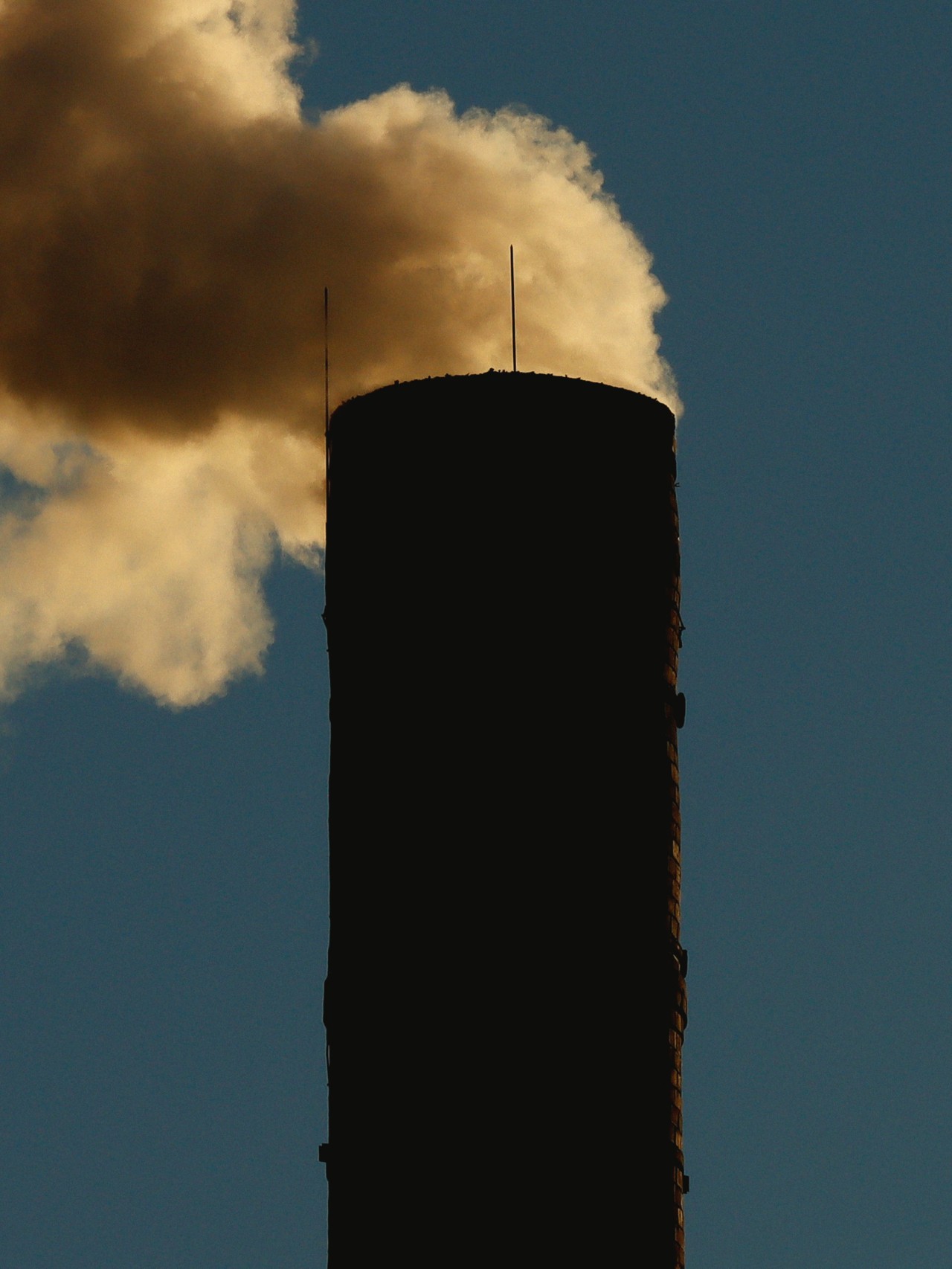

Photograph by Anastasia Miseyko / Connected Archives
WORDS BY SOFIA QUAGLIA
illustration by Ásta Thrastardóttir
This story is part of our 101 series, a collection of articles that unpacks the most pressing issues facing our planet today—and what you can do about them. Discover more from the series here.
Excessive greenhouse gases are causing climate change—we’ve all heard about it at this point. The situation is dire, and scientists around the world are working hard to figure out what this will mean for our species and others.
But what exactly are these heat-trapping pollutants? Where do they come from? And how are we so sure that they are behind the climate crisis? Let’s break down what greenhouse gases are, how they work, and what we can do about them.
Greenhouse gases are molecules that are scattered throughout Earth’s atmosphere. They surround the planet, blanketing it and trapping heat.
When the sun warms the planet, its light rays penetrate the atmosphere, heat the land during the day, and then radiate back into space at night. Greenhouse gases trap some wavelengths of light—specifically infrared light, the type we can’t see but can sense as heat and detect using thermal cameras—and prevent them from escaping our planet. This energy can bounce back towards Earth’s surface and heat it. This is similar to how greenhouses work: Thick windows let the sunshine enter but prevent heat from leaving.
The five primary greenhouse gases are carbon dioxide, nitrous oxide, methane, chlorofluorocarbons, and water vapor. All of these gases except for chlorofluorocarbons, which are produced to make refrigerants, solvents, and more, exist in nature.
Carbon dioxide is the most well-known greenhouse gas because it is the primary one released by human activity. Emissions of carbon dioxide continue to increase. In 1900, our use of fossil fuels emitted less than 2 billion metric tons of carbon dioxide into the atmosphere. In 2023, that rose to over 37.5 billion metric tons.

Normal biological processes release greenhouse gases: For instance, carbon dioxide is released when living things decay, nitrous oxide is released by bacteria in the soil and seas, and methane is released through biological processes in wetlands. Simple water droplets in the air—atmospheric water vapor—also have a greenhouse effect. In Earth’s geological history, greenhouse gases have kept the planet warm enough to host life.
But now, human activity has driven greenhouse gas levels to dangerous highs—levels that have been unprecedented in the past 800,000 years. Nearly all of that uptick occurred after the Industrial Revolution and can be traced back to human activity.
Since industrialization, there has been a rapid increase in the amount of greenhouse gases released into the atmosphere. Our society has created new processes that emit more of these molecules than the natural world would on its own, such as the extraction and combustion of fossil fuels like coal, natural gas, and oil. Some human activities, including wastewater treatment and fertilizer production, produce nitrous oxide, while others such as cow farming and landfills emit methane.
These pollutants can leave a lasting impact on the planet long after they’ve been emitted. On average, methane persists in the atmosphere for around a decade and nitrous oxide for a century, but the worst is carbon dioxide, which can remain in the atmosphere for thousands of years.
Burning fossil fuels is by far the greatest source of greenhouse gas emissions, accounting for about 75% of total global emissions and 90% of carbon dioxide emissions.
In Earth’s geological history, greenhouse gases have kept the planet warm enough to host life. But now, human activity has driven greenhouse gas levels to dangerous highs—levels that have been unprecedented in the past 800,000 years.
According to Climate Watch and the World Resources Institute, 75.6% of greenhouse gas emissions can be attributed to energy production. That includes generating heat and electricity for buildings, transportation, manufacturing, and more. The other top sources are agriculture (11.6%), industrial processes like making cement and chemicals (6.1%), waste from landfills and wastewater (3.3%), and changes to land use like deforestation (3.3%).
According to the 2023 Global Carbon Budget, China, the United States, India, the European Union, and Russia were the top five greenhouse gas emitters around the world. They accounted for 63.7% of total global greenhouse gas emissions in 2022.
Since the Industrial Revolution, temperatures have increased by about 1.1 degrees Celsius, and nearly all of that can be attributed to human-caused greenhouse gas emissions. One degree doesn’t sound like much, but it’s already driving temperatures to levels that threaten vulnerable human communities and biodiversity. It’s causing more extreme and frequent wildfires, hurricanes, heat waves, droughts, and more.
At the current rate of warming, temperatures could increase by 2.6 to 4.8 degrees Celsius by the end of the 21st century. According to the World Wildlife Fund, at 2 degrees Celsius of heating, Arctic sea ice would melt completely and coral reefs would virtually disappear. At 3 degrees Celsius, we could pass dangerous tipping points, causing irreversible changes to the Arctic and Amazon. At 4 degrees Celsius, a significant portion of the world would experience food insecurity, reversing their economic development; hundreds of millions of people would be at risk of having their homes inundated by sea level rise; and global average incomes could decrease by 23%. It could mean an unrecognizable planet and spell disaster for our civilization.
In short: for centuries.
The concept behind how the greenhouse gas effect first appeared in the early 1800s.
In 1824, a scientist named Joseph Fourier calculated that the Earth should be a lot colder than it was, given its distance from the sun. He speculated its temperature must be increased by a blanket-like layer of gases around it. In 1856, a scientist named Eunice Foote discovered that that blanket was likely made of carbon dioxide and moist air, and she noticed that tweaking amounts of these two components could change the Earth’s temperature. In 1859, a scientist named John Tyndall wrote that “the atmosphere admits of the entrance of solar heat; but checks its exit, and the result is a tendency to accumulate heat at the surface of the planet.”
Then, by the late 1800s, scientists also started pinpointing how manmade carbon dioxide being released into the atmosphere could make a difference in the planet’s temperature because of the greenhouse effect. In 1938, a scientist named Guy Callendar already speculated that, at the time, given the amount of artificial carbon dioxide released into the atmosphere, the average temperature of the planet would increase at the rate of 0.003 degrees Celsius per year.
In 1965, scientists warned then-U.S. president Lyndon Johnson: “Man is unwittingly conducting a vast geophysical experiment.”

There is no silver bullet; rather, a portfolio of changes and tweaks need to be made at both personal and societal levels. Reducing emissions on a global level will be no easy feat. Research published in the journal Science last month found that of the 1,500 climate policies implemented to reduce emissions in 41 different countries from 1998 to 2022, only 63 of them substantially reduced greenhouse gases.
The most crucial change needed is halting the extraction and combustion of fossil fuels and replacing them with renewable energy sources. There are many renewable energy options such as solar energy, wind energy, geothermal energy, and hydropower. Several countries are implementing policies that tax the use of fossil fuels and subsidize the use of renewable energies to transition from the former to the latter.
There are also small changes you can make to your lifestyle to emit fewer greenhouse gases. For one, using less electricity in homes and buildings—and being more efficient with the energy you do use—means less fossil fuels must be burned to produce it. This can involve, for instance, ensuring your home is insulated properly. You can also switch to types of lightbulbs that consume less energy and switch off your electric appliances when you’re not using them.
The way you move around can also help reduce your greenhouse gas emissions. Cars and airplanes produce large amounts of carbon dioxide by burning fuel, so traveling by bike, electric scooter, train, or bus is more eco-friendly. Carpooling among friends and neighbors is an easy and fun way to reduce your emissions, too.
Animal agriculture accounts for 10% to 20% of global greenhouse gas emissions. Replacing animal products with plant-based ingredients can reduce your carbon footprint and improve your health.
Historically, reducing greenhouse gas emissions has been at odds with economic growth for companies and countries. Generating energy using fossil fuels was simply cheaper than renewable alternatives. However, advancements in renewable energy technology and markets have made them far more cost-competitive in recent years. According to the International Energy Agency, solar and wind energy are the cheapest options over their lifespans for generating new energy today.
Other industries actively distract from and delay climate action. The fossil fuel industry, for example, knew about the threat of climate change as early as 1954 but spent decades spreading public doubt about it, according to expert congressional testimony in May. These days, many fossil fuel companies claim to be transitioning to “low-carbon” or “transitional” energy sources, but studies show that these are little more than greenwashing. Now across the country, Big Oil faces several lawsuits for allegedly misguiding the public about its role in causing climate change.
From changing our diets to electrifying our homes, Project Drawdown estimates that about 25% to 30% of the emissions reductions we need to prevent dangerous levels of climate change can be achieved at the household level.
Big Meat is in a similar boat. Record numbers of meat and dairy lobbyists attended the most recent U.N. climate conference, COP28. These industry actors have been called out for using the same playbook as Big Oil: denying their role in climate change and delaying conversations about reducing meat consumption.
High-emission industries spend millions of dollars on political influence, too. In the 2024 U.S. election cycle, the oil and gas sector has already contributed nearly $130 million dollars to political candidates, with nearly 90% of that going to Republicans. The same trends hold for the livestock, dairy, and meat-processing sectors.
The good news is that we know what we need to do to fix the climate crisis. One good place to start learning about what needs to be done is Project Drawdown, one of the world’s leading resources on climate solutions. Project Drawdown provides an extensive list of actions that could help limit global warming to 1.5°C or 2°C by 2100. This includes societal changes, like preventing deforestation and building out high-speed rail, but it also includes personal actions that we can take in our everyday lives. From changing our diets to electrifying our homes, Project Drawdown estimates that about 25% to 30% of the emissions reductions we need to prevent dangerous levels of climate change can be achieved at the household level.
That’s not even including other social actions like voting, joining political protests, or simply talking about climate change with your friends and family. As writer and climate activist Bill McKibben puts it: “The most important thing an individual can do, is be a little less of an individual and join together with others in movements large enough to make change.”
The scale of the fight might seem unwinnable—paralyzing, even—but we know what we need to do. We just need the political and economic will to get it done.
101: Breaking Down Greenhouse Gases

